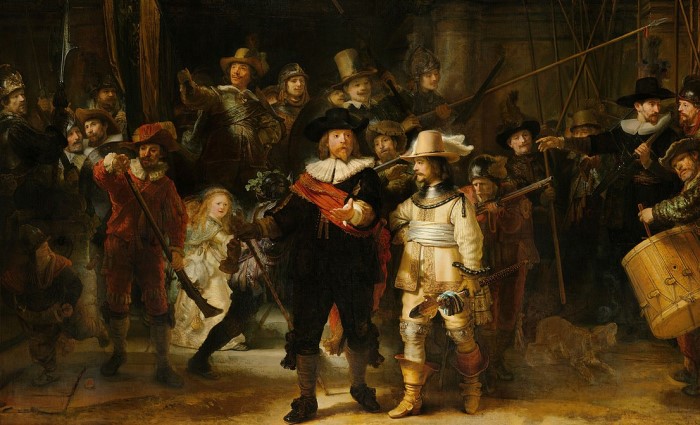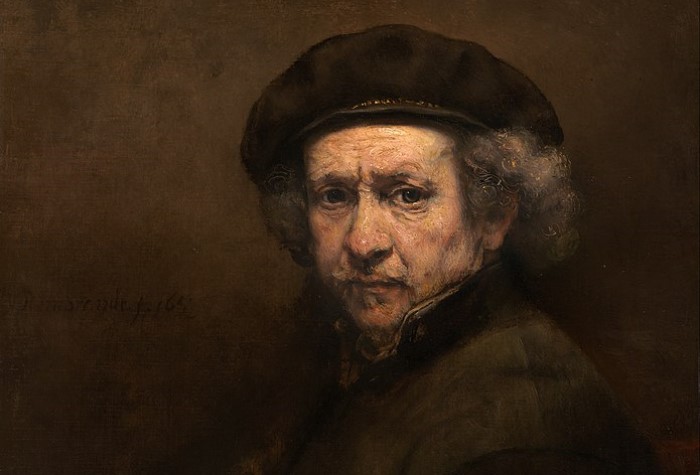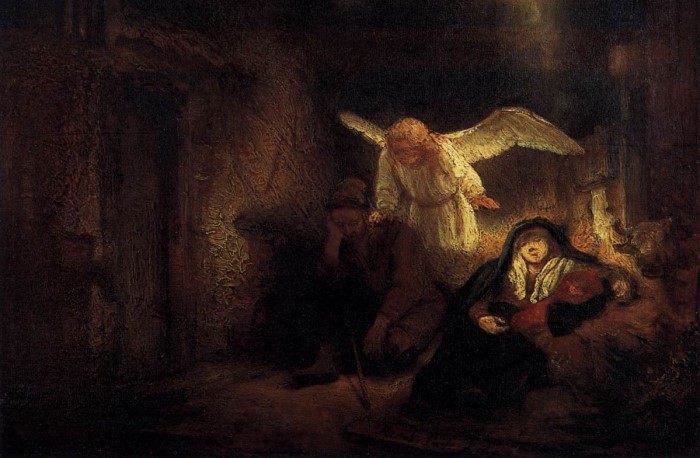
On July 15, 2006, the world celebrated the 400th birthday of the renowned Dutch painter Rembrandt van Rijn, who is one of the few artists whose fame has transcended all eras and cultures, such as Michael Angelo, Leonardo da Vinci, Vincent van Gogh, and Pablo Picasso. The remarkable 17th-century Dutch artist is highly esteemed by Jews due to his many canvases depicting Biblical stories and has been a frequently cited artist in Hebrew literature for centuries. He was among the only known artists before the 19th century to know Jews well and even paint some of them. He had such a deep insight into the strange, mystical ideas of the Jews that he even created illustrations for the unusual book of Rabbi Menashe ben Israel, a good friend of his.
Jewish mystics claimed that the light used so well in Rembrandt's artwork was the "stored light" of creation, indicating his comprehension of Kabbalah's hidden truths. Nonetheless, the Nazis were equally enthusiastic about Rembrandt and his number one fan was Adolf Hitler, who perceived Rembrandt, for some reason, as the ideal example of an anti-Jewish artist.
Even among those who generally don’t have an affinity for art, Rembrandt’s name is known and revered. Rembrandt's fame came relatively late in his lifetime, as he became 'unfashionable' and died in poverty. However, he was 'rediscovered' in the 19th century, and is now one of the most revered painters in history. His prolific nature and versatility were outstanding for his time, as the majority of Dutch painters tended to stick to one type of art. Rembrandt dealt with a range of topics from modern scenes to mythology and biblical themes - the latter being particularly popular in Holland, and Rembrandt excelled in it.
It's impossible to discuss Rembrandt without talking about his most famous creation: The Night Watch. In this incredibly dynamic work, Rembrandt utilizes the power of light and darkness to create a unique atmosphere, which had never been seen before. His mastery of contrast has left a lasting impression on the world of art.

Before the 19th century, there was no artist who painted himself as many times as Rembrandt did. He painted himself around 80 times over 41 years, and no one from before that period is as recognizable as he is. This shows how popular his works were, and also how many people attempted to forge them - his greatness was rewarded with hundreds of thousands of forgeries. This must be the greatest compliment to an artist of the time. As the years went by, it became obvious that many artworks supposedly created by Rembrandt were his students' handiwork, with the master's guidance and in his style. It was pretty common for these works to be signed by him or have a "corrected by Rembrandt" note, to give them his stamp of approval.
Now, there is a group of professionals working on the Rembrandt Project, which has been running since 1968, to decide which of the pieces attributed to Rembrandt are genuine. Surprisingly, a lot of the artworks ascribed to him in the past were not crafted by him! This has prompted the inquiry - does this make the painting any less of a masterpiece? The answer is no, it is simply an attribution error. The committee is only halfway through its appraisal of Rembrandt's oeuvre, which is extensive, meaning they have years of hard work ahead. In the future, there could be many more revelations of paintings that we thought were Rembrandt's, being revealed to be the works of someone else.

Rembrandt self portrait
Rembrandt is especially meaningful to Jews due to his remarkable involvement with both the Old Testament and the Jewish people of his era. Unlike other famous artists of his day, Rembrandt was not known to portray Jews negatively. He was an enthusiastic reader of the Bible and Dutch citizens of his time identified with the stories in the Bible, as they drew parallels between the struggles of the Israelites in Pharaoh's Egypt and their struggles in Spain. As a result, they considered themselves the chosen people spoken about in the Bible. During the era of Rembrandt, countless paintings depicting biblical stories were made by hundreds of artists - yet there is no denying Rembrandt was the greatest of them all, surpassing even Michelangelo when it came to Old Testament scenes.
His work brought a sense of humanity and spirituality to the world of biblical themes; his characters were portrayed as flesh and blood individuals, their stories resonating with the viewers. Rembrandt also depicted himself and his family members as biblical figures, demonstrating his profound identification with the subject matter. Many believe that it was likely Jewish sermons he heard had affected his understanding of these biblical stories. What's more, we know for sure that he utilized Joseph's book "Antiquities of the Jews" to enrich some of his images. Yet, he did not have a consistent, ordered method for painting biblical scenes.
One of his favorite Biblical figures was the hero Samson. He painted several scenes of Samson, in one of which he even gave Samson his own face. King David was also an adored figure, and he was featured in a variety of paintings depicting different moments from his life - six or seven, to be exact. Even more intriguingly, at least five pieces of art showed humans interacting with angelic messengers sent by God, a theme that seems to have captivated the artist.

The Blinding of Samson by Rembrandt
When it comes to Rembrandt, many rumors were spread that he was connected to Jews in some way. Just recently a team member in Spain argued that Velazquez, the devout 17th-century Spanish painter, was Jewish.
The primary reason for believing Rembrandt had Jewish ancestry is his deep admiration and respect for Jewish people, which doesn't match with the image of a typical Christian. Moreover, he painted the Old Testament Bible more than almost any other artist, even the Dutch painters of the 17th century who mostly depicted the Bible. Rembrandt was particularly drawn to unique and intriguing people and his paintings often depicted Jewish figures. By coincidence (or perhaps not), he was living in a neighborhood that eventually became known as "The Jewish Quarter".
There is speculation that the people from the area may have served as models for his art, but there aren't any solid facts to prove that. Nevertheless, it is undeniable that his portraits showcase certain "Jewish facial features". The idea that Rembrandt was intimately connected to Jews is also rooted in his acclaimed piece The Jewish Bride, although it seems she herself was not Jewish. It could be that he meant to depict Isaac and Rebecca. In any case, he is the earliest artist known to have a strong relationship with Jewish people. Before the 19th century, such close relations with Jews were not normal for prominent creators.

The Jewish Bride by Rembrandt
The Jews had only recently settled in the Netherlands when Rembrandt lived there. The Sephardim and Ashkenazim lived in closed-off societies that were hostile to one another. The Sephardim looked down on the Ashkenazim and refused to marry them. But then comes along this well-known artist, Rembrandt, and develops a connection with Jews, which is comparable to a popular author nowadays forming close ties with members of the Ethiopian community. He had connections with some distinguished Jewish people, like Dr. Ephraim Buenos and Daniel Pinto, as well as making deals with a Jewish merchant named Shmuel Ortega.
Though he often clashed with many of these Jewish friends, the same could be said for nearly everyone else he knew. He was not known as a compassionate individual in his lifetime. Reports suggested that Rembrandt was associated with an organization that worked to improve the relationship between Jews and Christians. However, there is no evidence to back this up, and it is simply an educated guess, considering the existence of a Christian faction that looked to engage with Judaism out of either religious or humanitarian motivations. Unfortunately, there is not a single document that supports this, and there are no minutes of meetings where Rembrandt discussed this issue. If such records are discovered, it would be quite intriguing, but would not have any substantial impact on our understanding of Rembrandt as an artist.

Joseph's Dream by Rembrandt
Many Jews eagerly sought to show that Rembrandt encountered the renowned philosopher Baruch Spinoza and painted his likeness. Unfortunately, there exists no solid proof that these two remarkable figures, one Jewish and the other perhaps Jewish, ever crossed paths. Although they were both living in Amsterdam around the same time, it is doubtful that they were acquainted among the hundreds of thousands of people living there. However, it is quite likely that Rembrandt's pal Menashe ben Israel was familiar with Spinoza. If a portrait of Spinoza done by Rembrandt were to be discovered, it is sure to cause an uproar as they were both living in the same city and vicinity.